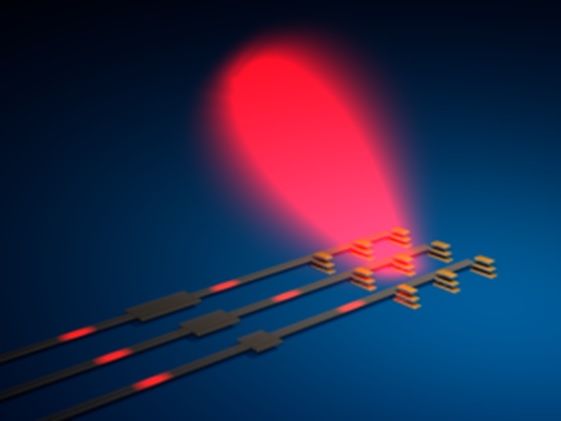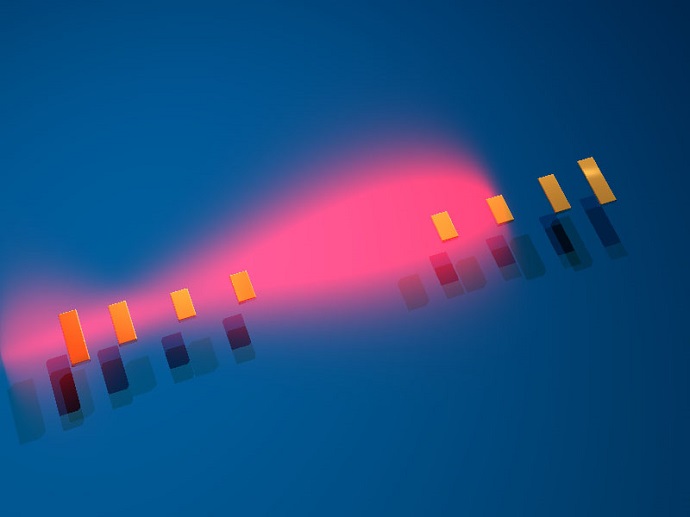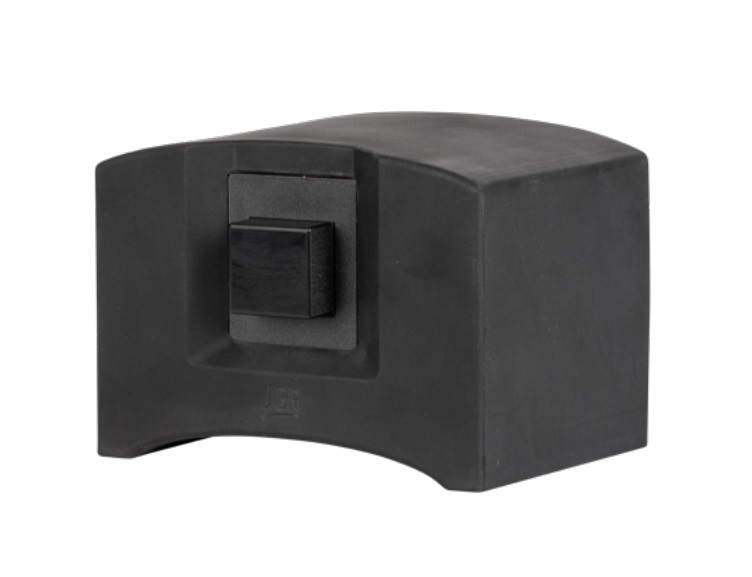July 4, 2014
A team of scientists from the University of Stuttgart, the Max-Planck-Institute of Solid State Research in Stuttgart, the University of Pennsylvania and by Carl Zeiss AG Corporate Research has imaged wireless transmission of optical power between two optical nanoantennas. The researchers developed a novel method based on photoluminescence to sensitively probe optical fields around nanostructures and applied their technique to image the transmission of optical signals. The results appear in the latest issue of the journal “Nature Communications”. The method developed by team is a very powerful tool in understanding the propagation of light between optical nanostructures.
When you use your cell phone to place a call or to send a text message, your phone connects to a nearby transceiver station via an antenna link. Information is transmitted efficiently and wirelessly using this invisible cable connecting your hand-held device to the wire network. It has been a dream to take the concept of antenna links from the radio frequency regime to the optical domain. Combining the enormous bandwidth of optical communication with the flexibility and low loss of antenna links renders this a very exciting concept to transmit optical signals. An optical nanoantenna link would allow extremely high bandwidth signal transmission between nanoscale devices. This could be used for example to speed up communications between integrated circuits. Optical nanoantenna links could even be reconfigured by steering the transmitted beam in the same way as is done in radar technology.
The team led by Prof. Harald Giessen of the 4th Physics Institute at the University of Stuttgart fabricated optical nanoantenna structures using electron beam lithography in collaboration with the Max-Planck-Institute for Solid State Research. These nanometer scale metal structures control optical fields in the same way as conventional radio frequency antennas direct the transmission and reception of radio waves. The scientists then positioned photoluminescent molecules around the nanostructures with nanometer scale accuracy. This allowed them to image the distribution of optical energy around the nanoantennas. The team applied their technique to observe for the first time the transmission of optical energy between two linked optical nanoantennas. They further quantified the power transmission efficiency of the link and observed that the signal transmission has low loss, turning optical nanoantenna links into a very promising approach for transmission of optical signals.

Conceptual image of steerable wireless data transmission by controlling the phases of the individual nanoantennas
Having demonstrated the transmission of optical power between two optical nanoantennas, the researchers implemented a device capable of angular beam steering. This idea was inspired and supported by Dr. Michael Totzeck from Carl Zeiss AG in Oberkochen. An array of transmitting antennas was used, having slightly different phases of the signals transmitted from the individual antennas. This results in the radiated optical beam propagating in different directions depending on the phase of the transmitters due to interference. The research team achieved this by shaping the wave front of the field incident on the transmitting array. By controlling the wave front the transmitted radiation could be steered over a large angular range of 29 degrees. This allowed the team to realize optical links where the receiving device could be dynamically changed. This technique can be applied in high speed reconfigurable data links. Maybe in the future you will download this document via such a link!
D. Dregely et al., Nature Communications 2014, doi: 10.1038/ncomms5354
“Imaging and steering an optical wireless nanoantenna link”












